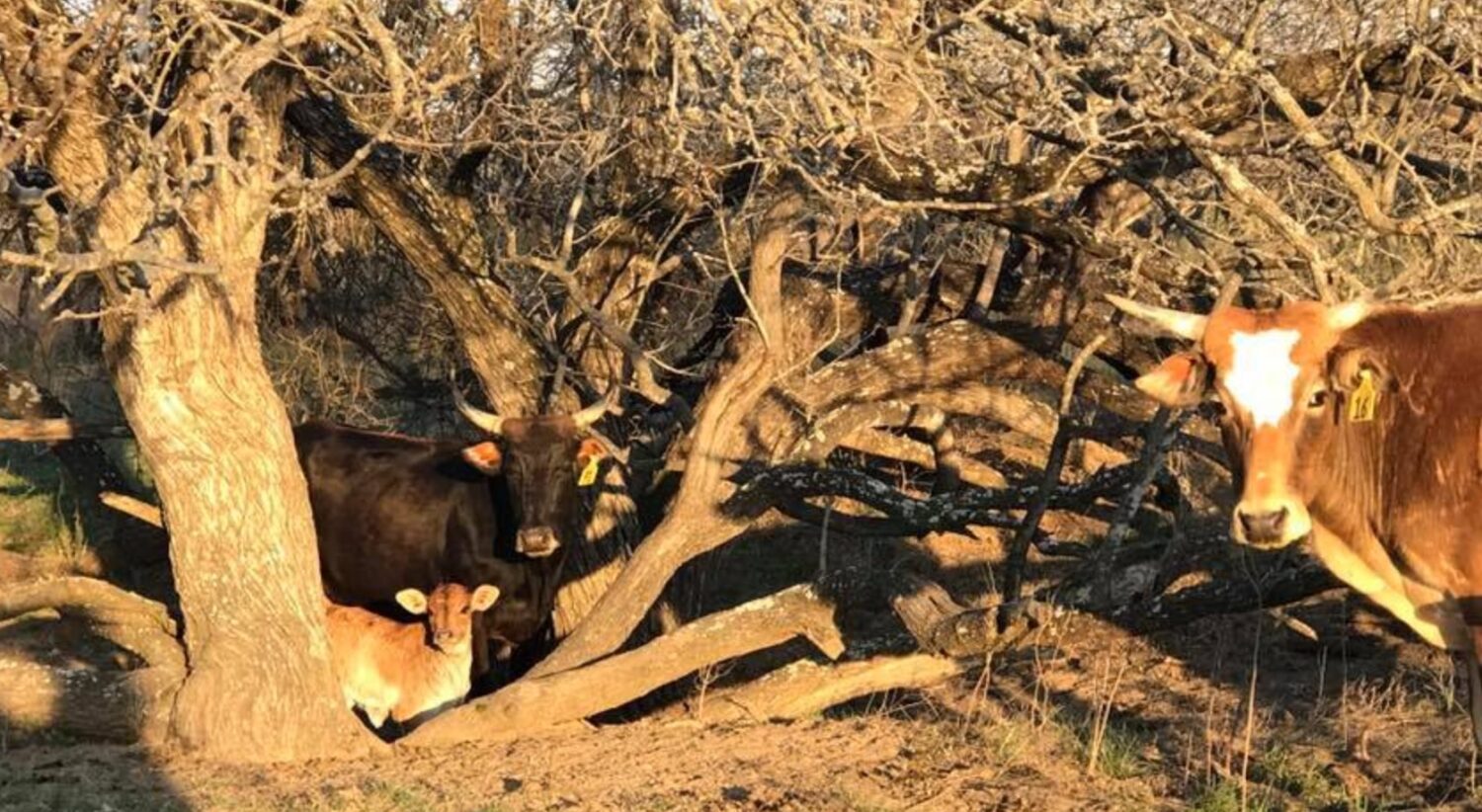by Terry Lidral
Bucking Stock Talk spoke with Dr. Lisa Mauzerall of Benchmark Animal Hospital in Perkins, Oklahoma about hoof health of the bucking bull. (See bio and photo below.)

BST: Why is hoof health important for a bucking bull?
DR. MAUZERALL: The integrity of the hooves is important because the hoof is the base that supports their hock and pasterns, the foundation that bears the weight on the legs. Bucking bulls are athletes and their athletic performance puts a lot of strain on their legs when they buck. Due to this, their ability to buck can be diminished or they might even be incapable of bucking if they don’t have that healthy, solid foundation to land on.
BST: Explain the physical structure of the hoof.
DR. MAUZERALL: The hoof is complex and made up of many different parts. The hoof begins where the hide ends. This area where hide meets hoof is considered to be the coronary band. The hoof wall extends down the front of the foot. The bottom of the hoof is the sole which leads into the “Heal” that is called the bulb. These parts of the outer layer protect the inside of the hoof itself which includes the coffin bone, the navicular bone, coffin joint, and the deep and superficial digital flexor tendon. The wall and sole of the hoof act like our fingernails and continue to grow over their lifetime.

BST: What are common problems in the hoof of a bucking bull?
DR. MAUZERALL: When dealing with bucking bulls you usually can see abscesses, lacerations, or even broken bones. These problems are all treated in a variety of different ways. Abscesses can include soaking the foot, antibiotics, and placing a block on the foot while lacerations may need to be debrided and stitched or merely treated with oral antibiotics and anti-inflammatories. The American Veterinary Medical Association has done studies on the fact that bucking bulls are more likely to incur pelvic limb injuries than their non bucking counterparts.
Read BST’s interview with Dr. Mike J. Schoonover about the bucking bull’s musculoskelatal structure here: https://buckingstocktalk.com/bucking-bulls-what-to-know-about-the-musculoskeletal-structure/
BST: What are the signs of injury or problems with the hoof?
DR. MAUZERALL: The most common sign of injury or problem with the hoof is the sign of lameness. Cattle may not want to bear weight on the foot if it is injured or sore. Bucking bulls are tough animals so the signs of a hoof injury could be very slight and difficult to detect. Perhaps it might be something odd in his behavior like he turns in a different direction than he normally does.
BST: Are some bulls more prone to hoof problems, and if so, why?
DR. MAUZERALL: Hoof condition depends on the bull’s own immune health and hoof care routine. Some bulls can be susceptible to hoof problems. Proper maintenance can prove to be the best preventative against hoof issues.
BST: What are the indications that hoof maintenance is needed?
DR. MAUZERALL: Any signs of lameness or tenderness on their legs or feet could be an indication of the need for hoof maintenance. Hooves that are overgrown can cause changes in the angle to the hock and pastern set which can cause the animal to be sore.

BST: What is a practical schedule for routine hoof maintenance?
DR. MAUZERALL: Bulls should have routine hoof care maintenance at least one a year. They should have a routine check-up to make sure they don’t need their hooves trimmed, and to check for any signs of abscess or injury. Preventative medicine is always more cost effective than treatment options. Not to mention, routine hoof care can be way more time efficient. Treatment of hoof injuries can take up to weeks or months and keep your bull from being able to perform. Preventative hoof maintenance can be a day’s task of getting everyone’s hooves trimmed and then back to their jobs.
BST: When penning a bull, are there certain conditions that can lead to problems of the hoof?
DR. MAUZERALL: Whenever you pen a bull, always take into consideration the ground conditions and how long the bull will be there. For instance, if you plan to be penning a bull for an extended period of time, you don’t want them in “dry lot” conditions. Standing in excess mud or water for long periods of time can lead to hoof rot issues.

BST: Does the condition of the hooves have any effect on a bull in his ability to perform live cover?
DR. MAUZERALL: To live cover, the bull needs to be considered sound enough to bear all his weight on his two rear legs. With that being said, hoof care is incredibly important so the bull can bear weight properly. Also, if a bull receives an injury to his hooves, or any other part of his body, if severe enough, it can affect his semen quality for up to 30-60 days after the injury itself. Both of these things can quickly disrupt your breeding season. With routine and preventative care, the likelihood of these problems happening would be much lower.

Dr. Mauzerall graduated with a Doctorate of Veterinary Medicine in 2006 from Oklahoma State University. She is the owner of two mixed animal clinics -Countryside Vet Services and Benchmark Animal Hospital. Dr. Mauzerall has been working with bucking stock for 10 years. For the past 8 years, she has worked the bucking stock sale in Guthrie, Oklahoma certifying health certificates and tending to any medical needs of the animals while there.
Watch a hoof care video on youtube here: https://www.youtube.com/watch?v=Oau90xtgp34

